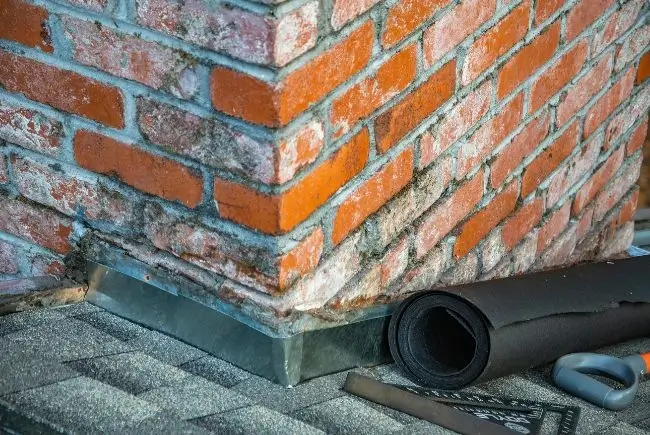Your roof flashing is just as important as your entire roof system. When neglected, it can lead to some serious roofing issues that will require professional repairs. This post, courtesy of Maupin Roofing, walks you through what roof flashing is, its various types, material options, installation process, and common issues (plus solutions).
What Is Roof Flashing?

Roof flashing refers to thin material (usually sheet metal) applied to different parts of your roof system. Its aim is to provide a waterproof seal around spots that are prone to leaks, such as vents, chimneys, skylights, walls, and dormers. With flashing, water gets directed away and your roofing materials remain watertight.
Without proper flashing, rainwater can make its way into the roof structure. If this isn’t addressed right away, it might lead to mold growth, wood rot, leaks, and even structural damage in the worst cases. Given Oklahoma’s diverse weather, having roof flashing is quite simply a no-brainer.
Different Types of Roof Flashing
1. Continuous Flashing (or Apron Flashing)
This kind of flashing is a long, single piece of metal that carries water down to the shingles below. It’s used where a vertical surface or wall connects with a sloped roof. Long pieces have built-in expansion joints.
2. Base Flashing
Some roof features, like chimneys, need two pieces of flashing. The base flashing is the bottom piece connected directly to the roof. Roofers generally use roofing cement to seal and secure the base flashing to the other components.
3. Counter Flashing
Placed opposite or above base flashing, counter flashing completes the two-part system. This flashing piece serves to direct water away from the joint.
4. Step Flashing
This one is a rectangular piece of flashing bent 90 degrees in the center. It’s used for roof-to-wall flashing, and is installed in a step-like pattern to make sure that water flows away from the wall.
5. Valley Flashing
As the name suggests, this type of flashing is placed in the valleys where two planes of a roof meet. These pieces make sure that water flows down the valley and into the gutters, keeping water from seeping into the roof deck.
6. Drip Edge Flashing
These are installed along the roof’s edges. They prevent water from reaching the fascia and send it to the gutters, protecting the roof’s underlying components.
7. Kickout Flashing
Kickout flashing is placed at a spot where the roof edge connects with a side wall. This type of flashing sends water into the gutters, keeping it from dripping down the side of the building where it can leave behind streaks and even cause damage.
8. Chimney Flashing
A combination of step flashing and counter flashing is used around chimneys to protect the gaps and junctures from letting water in.
9. Skylight Flashing
This refers to custom flashing installed around skylights where the skylight connects with the roof surface.
10. Plumbing Vent Flashing
Seals around any plumbing pipes sticking through your roof, preventing water from sneaking along the pipe and into your home.
Roof Flashing Materials

There are a couple of things that determine whether your roof flashing will actually last. The first one? The materials used.
1. Copper
Copper roof flashing is top-of-the-line in durability and aesthetics. Copper develops a protective patina over time which makes it corrosion resistant.
2. Aluminum
Aluminum flashing is lightweight and easy to shape and install. It’s suitable for multiple types of flashing, but can get damaged in locations that experience strong winds.
3. Galvanized Steel
These are tough and economical. This material stands up well to water, but you have to watch out for rust over time.
4. Lead-Coated Copper
For those looking for extra strength and long-lasting quality, lead-coated copper combines copper’s longevity with lead’s protective qualities.
5. Rubber or Plastic
These are typically used for vent flashing, prized for their flexibility and easy installation. However, they may not last as long as metal flashing.
How to Install Roof Flashing: Tips from the Pros

Another factor that plays a huge role in the durability and longevity of your flashing is proper flashing installation. Poor installation, by contrast, will leave your roof flashing vulnerable and ineffective when it comes to sealing gaps and preventing roofing issues.
1. Preparation
At Maupin Roofing, our professional roofers start with proper preparation. This involves removing the old flashing, if any, and cleaning the area of dirt and debris.
2. Measure and Cut
We then measure twice and cut the flashing material to make sure the piece fits perfectly.
3. Positioning and Securing in Place
Using the right fasteners for the material, our crew secures the flashing so it won’t budge, even in high winds or storms.
4. Sealing
We high-quality, appropriate sealants to close up any gaps. We then double-check to make sure everything is watertight.
5. Integrating with Roofing Materials
Finally, our roofers make sure the roofing material overlaps the flashing appropriately, directing water over the flashing and into the drainage system.
How to Repair Roof Flashing Issues

Even the most perfectly installed flashing can run into problems as it ages. Keep an eye out for the following common issues and address these problems accordingly.
1. Corrosion or Rust
Regular inspections can catch this early, and replacing rusted sections can prevent worse problems from developing.
2. Loose Flashing
If your flashing starts becoming loose, it’s time to re-secure it before issues like a roof flashing leak can arise.
3. Improper Installation
Sometimes flashing isn’t installed correctly, which can lead to leaks. This usually requires a professional fix by roofing professionals like Maupin Roofing so you’re sure it’s done right this time around.
4. Sealant Failure
As years pass, sealants can dry out and crack. Regular maintenance and re-sealing can extend its life and keep your home dry.
Get a Free Quote from Maupin Roofing Today
If you’re looking for the best services for roofing in OKC, our roofing professionals are ready to help! Whether you need new flashing, replacements, or maintenance, you can rely on our expert crew to execute proper installations and repairs with results that last.
Get in touch with us today!

Types of Asphalt Shingles for Residential Homes
People tend to use asphalt shingles for residential homes because of their affordability and longevity. At Maupin Roofing, we’ve had numerous clients ask about the

Understanding and Resolving Issues with Roof Flashing
Your roof flashing is just as important as your entire roof system. When neglected, it can lead to some serious roofing issues that will require

Harnessing Natural Light for Commercial Spaces
Nothing beats the warmth of direct sunlight streaming into a workspace. In Oklahoma City, where there’s ample natural light, businesses have a golden opportunity to

Seasonal Gutter Cleaning: Year-Round Roof Protection Guide
Seasonal gutter cleaning is just as important as regular home maintenance. Ignoring your gutters means you can end up with a whole lot more than

8 Most Common Causes of Roof Leaks and How to Prevent Them
Unfortunately, the most common causes of roof leaks are not always immediately noticeable, making it hard for homeowners to know whether they’re actually dealing with

Clay Tile Roofing for Homes: Everything You Need to Know
Interested in clay tile roofing for homes? There are a few things you should know about it, and Maupin Roofing is here to lay everything








